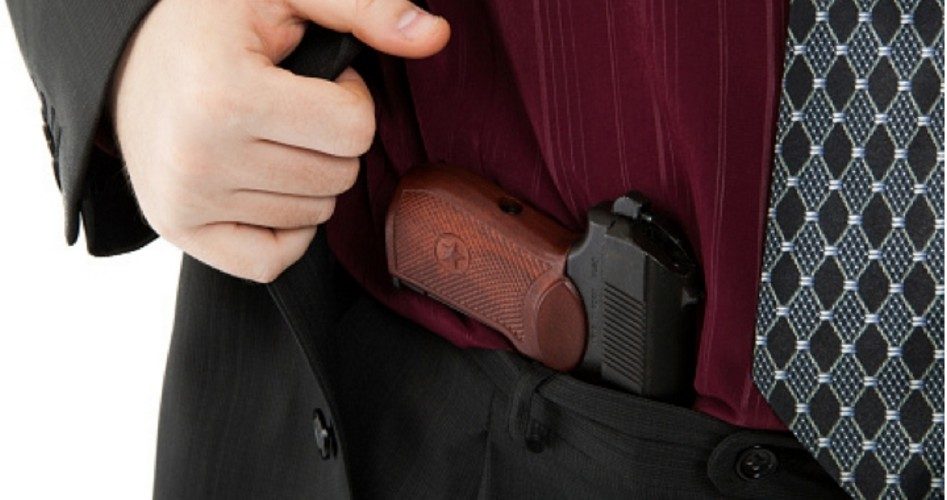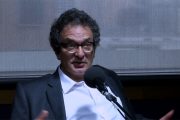
On Tuesday a prominent rabbi wrote to every member of the European Union urging them to “stop talking and start acting” and allow Jews “to own weapons for the essential protection of their communities … to protect their members from potential terror attacks.”
Rabbi Menachem Margolin, the general director of the European Jewish Association and the Rabbinical Centre of Europe — the largest federation of Jewish organizations and communities in Europe — wrote:
The Paris attacks, as well as the many challenges and threats which have been presented to the European Jewish community in recent years, have revealed the need to stop talking and start action.
We hereby ask that gun licensing laws [be] reviewed with immediate effect to allow designated people in the Jewish communities and institutions to own weapons.
His letter raised skeptical eyebrows at Newsweek magazine, whose Catherine Phillips sought to “clarify” exactly what he meant. She got her answer: Margolin told her that as many people within the Jewish community as possible should carry weapons. He told her that a license to carry would provide people in the Jewish community with a sense of security that is sorely lacking in Europe, particularly in light of recent events.
She pressed him on just what type of weapons he had in mind. He told her:
Just a gun. I’m not referring to tanks. It’s not about heavy weapons. It’s just that everyone should have something in their pocket.
In a telephone interview with Adam Kredo at the Washington Free Beacon, Margolin reminded him that this isn’t the first time he’s demanded such action:
We demanded from the European governments some time ago that action should be taken.… [We’re] not surprised to see the results [of their inaction] in Paris.
Those results include many Jews refusing to attend services at synagogues or even patronize kosher markets, said Margolin, adding that “they’d be more comfortable if they knew people were trained to react in an emergency.”
One of those critical of Margolin’s proposal is Rabbi Abraham Cooper, associate dean of the Simon Wiesenthal Center, who said that a handgun would have been of little value in the Paris shootings:
As to personally being armed, such a move could help when a Jewish person is threated by thugs, but won’t help if — God forbid — Charlie-type terror attacks are launched.
Attacker Amedy Coulibaly, armed with two AK-47 rifles and a pistol, shot and killed four Jewish customers at a kosher supermarket. Coulibaly said he targeted the shop “because it was Jewish,” according to sources.
Cooper needs to do his homework. Specifically he needs to inform himself about the Warsaw Ghetto uprising in April 1943, when Jews being rounded up for extermination decided to defend themselves against such seemingly overwhelming odds. The German commander in charge of rounding up the Jews for extermination at the Treblinka death camp was astonished at the resistance they put up, despite being poorly armed. Commander Jurgen Stroop reported:
When we invaded the Ghetto for the first time, the Jews and the Polish bandits succeeded in repelling the participating units [which] included tanks and armored cars, by a well-prepared concentration of fire….
The main Jewish battle group, mixed with Polish bandits, had already retired during the first and second day to the so-called Muranowski Square. There, it was reinforced by a considerable number of Polish bandits. Its plan was to hold the Ghetto by every means in order to prevent us from invading it….
Time and again Polish bandits found refuge in the Ghetto and remained there undisturbed, since we had no forces at our disposal to comb out this maze….
One such battle group succeeded in mounting a truck by ascending from a sewer in the so-called Prosta [Street], and in escaping with it (about 30 to 35 bandits)….
The bandits and Jews — there were Polish bandits among these gangs armed [just] with carbines, small arms, and in one case a light machine gun — mounted the truck and drove away in an unknown direction.
It took nearly a month for Stroop and his SS troops to overcome the Jewish resistance, and only by burning them out using flamethrowers and by blowing up the buildings where they were hiding. Stroop wrote to his commander on May 16, 1943, nearly a month after the uprising began:
The former Jewish quarter of Warsaw is no longer in existence. The large-scale action was terminated at 20:15 hours by blowing up the Warsaw Synagogue….
[The] total number of Jews [we] dealt with were 56,065, including both Jews caught and Jews whose extermination can be proved….
The former ghetto is completely destroyed. Only the dividing walls are left standing.
This ghastly atrocity perpetrated by Stroop and his forces emphasize the potential resistance a poorly-armed, rag-tag collection of half-starved citizens can bring against a war machine such as that of the monster Hitler. Imagine what the outcome of the Charlie Hebdo attacks might have been had some of those shopping had a little “something in their pockets.”
A graduate of an Ivy League school and a former investment advisor, Bob is a regular contributor to The New American magazine and blogs frequently at www.LightFromTheRight.com, primarily on economics and politics.



